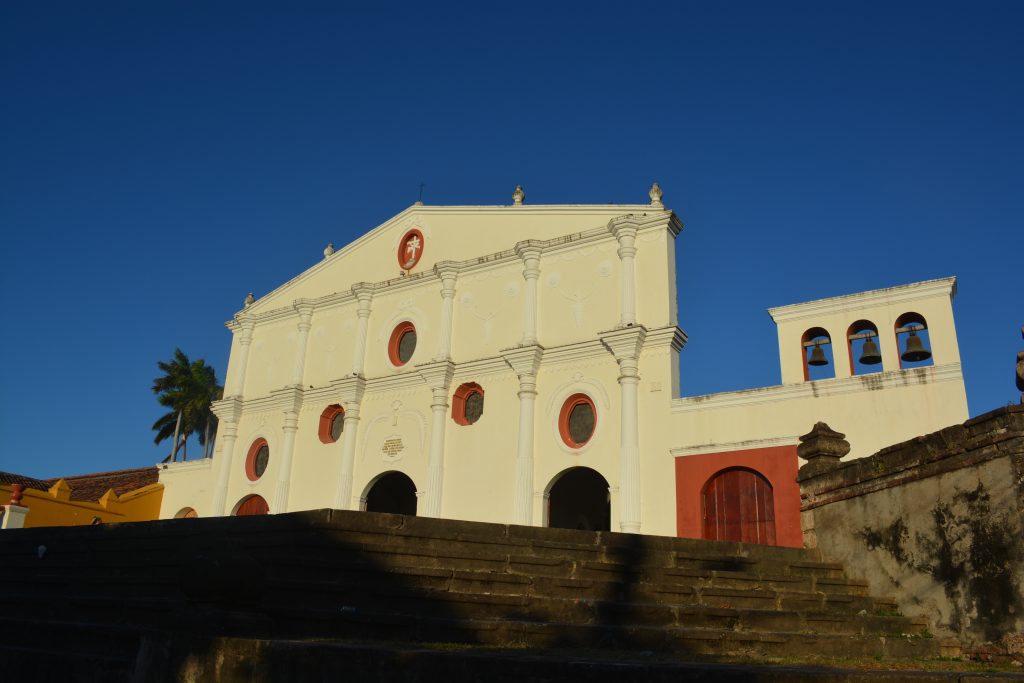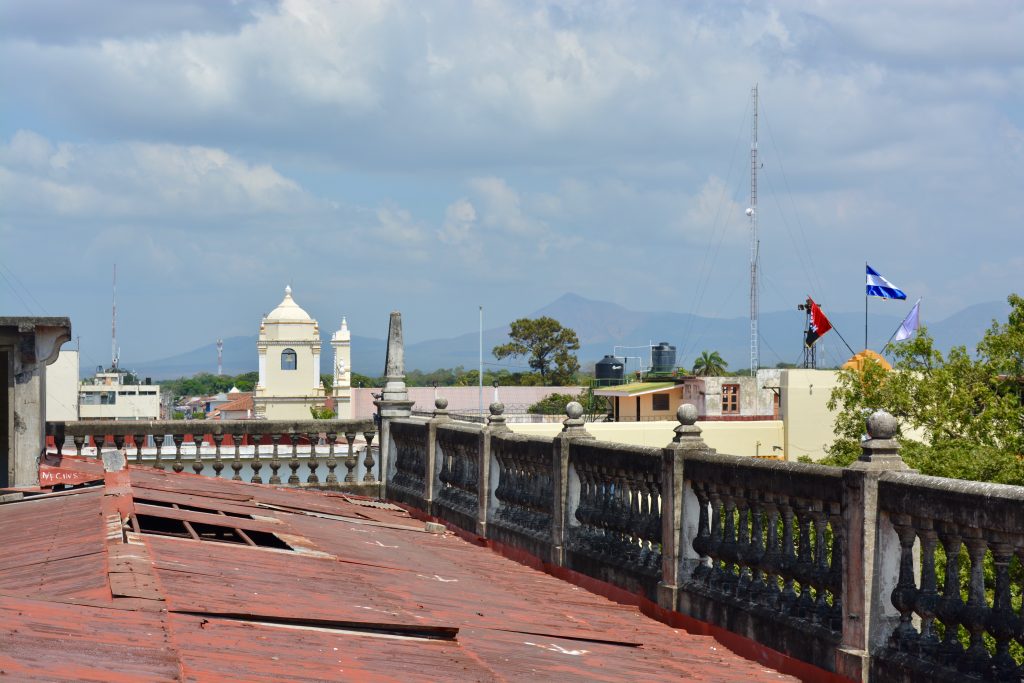From San Jose an early morning Tica Bus to Granada, Nicaragua. The bus journey was quite long and border crossings in Central America seem to take much longer than those in South America. Leaving Costa Rica, however was relatively simple and once all the passengers cleared the formalities, the bus made its way to the Nicaraguan side. There you had to pay one USD to enter the immigration building and then 13 USD for a tourist card, where we were given 90 days – essentially this covers all four Central American countries, Nicaragua, Honduras, El Salvador and Guatemala.

Once in Nicaragua the bus journey passed by Lake Nicaragua and the classic cone shaped Volcán Ometepe which sits in the middle of the lake. Most Central American towns do not have central bus stations and the Tica Bus dropped us off on a street a few blocks from Granada’s main square. Granada is an attractive low rise colonial city with many churches and adobe coloured buildings.

The main square is dominated by the cathedral, which has been well restored and neatly painted. Inside, it lacks the opulence of some of the grander cathedrals in Latin America, and has some slightly cartoonish painted murals of biblical scenes on its ceilings. Elsewhere around the main square there are a number of other important buildings from the colonial times, each largely intact from when they were originally build giving the square an integrated architectural feel.
Running off from the square towards the lake are a number or restaurants and bars, frequented by travelers and a surprising number of American snow birds. The lake offers decent views of the surrounding mountains and volcanoes. Volcán Mombacho dominates the views over the city and offers good trekking and adventure pursuits.

The San Franciscan church has recently been repainted from light blue to ochre, also contains a small museum on the history of Granada that uses the old cloisters well. The church itself was only open during services, and retains a number of the original features.

We stayed in the Hotel Colonial Granada, a beautifully restored old colonial building just off the main square with peaceful courtyards and well appointed rooms. While not cheap, equivalent hotels in more expensive countries in Central America will cost significantly more.

While we normally don’t go in for tourist things like a horse and carriage ride, we did choose one for an evening tour around Granada. It took us round a number places and churches we hadn’t been to, including the old railway station. Also the old boy that took us round gave us a basic commentary in Spanish and when we finished was met by his daughter and family. It is often important to support such people in making a basic honest living in a country like Nicaragua.

From the traditionally more conservative Granada we took a shuttle bus to the more liberal Leon, which was also very central to the over through of the Somoza regime in the Sandinista Revolution. They journey took about four hours passing through the sprawling capital on Managua.

Leon is another low rise colonial city, slightly bigger than Granada, again full of churches and other old colonial era buildings. The main cathedral is one of the largest in Latin America, only smaller than the ones in Mexico City and Lima. It certainly has a large footprint and has a good feel of interior space. The square in front of the cathedral is well used for public ceremonies and open air events.

Opposite the cathedral is the Museo de la Revolución which is in an old slightly decaying building, where you have a guide that tells the story of the overthrow of the Somoza regime and the Sandinista Revolution. The guides are normally connected with the Party and the Revolution and give an interesting and comprehensive account of their struggles. Some of the old photographs capture the period and personalities very well.

The tour then takes you onto the old tin metal roof for views of the city and surrounding volcanoes. The roof walk is not for the faint-hearted or those worried about Health and Safety, but is a unique experience.

In the streets surrounding the main square there are many permanent posters to the fallen revolutionaries, especially in the late 1970s. What strikes you in particular is how young so many of them were, and that’s probably a key reason why the revolution is such an important part of Nicaragua today.

A couple of blocks away next to the San Franciscan Church is the Ortíz Gurdián Foundation Art Center which has a number of interesting paintings by Latin American and other artists all set out in a couple of well preserved colonial buildings either side of the road. Of particular interest was a mash up of Picasso and Velazquez by the Cuban artist Emilio Falero.

Leon has numerous churches, but inside probably if you were to visit just one, I’d recommend the Iglesia la Recoleccion, with its drapes and fine wooden ceiling.

From Leon we booked the Tica Bus to San Salvador, the bus left at 3 am in the morning from a bus stop on the main Pan American Highway next to an all night petrol station. As things close down early we had to get a taxi just after midnight and wait watching the night traffic go by on the roadside. The bus arrived about 15 minutes late, and had all our details ready for the long journey ahead. Unfortunately a couple of hours later the fan belt broke and we waited on the roadside for a later bus to arrive about 3 hours later to take us across the border into Honduras and the town of Choluteca where we took another bus a couple of hours later to San Salvador. It was a very long journey, but the bus company despite the mechanical failure got us safely to our final destination.

Dates: Friday 2nd February to Wednesday 7th February

